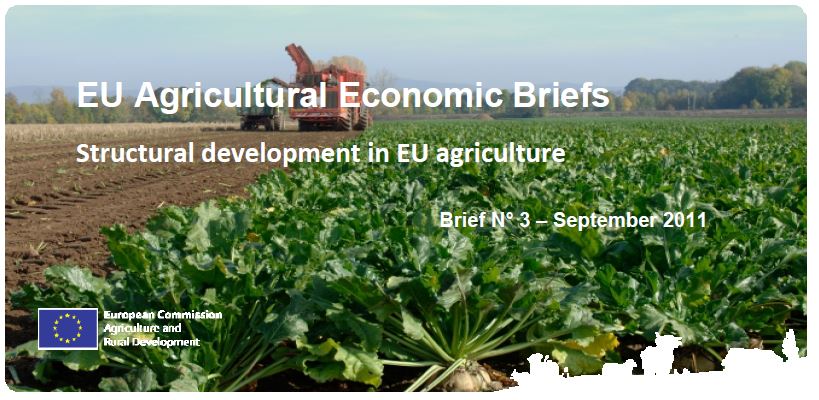EU Agricultural Economic Briefs-Structural development in EU agriculture
While structural development in agriculture is typically described as a change in the number and size of farms, this may not be sufficient to illustrate the transformation in EU agriculture over the last decades in terms of farming practices, production, level of integration in the food supply chain, etc. Nonetheless, dynamics in terms of farm numbers and sizes can serve as a starting point to analyse the direction of European agriculture since the 1970s along this process of structural change. Available statistics show that changes occur at a different pace across the EU-27, with some Member States experiencing a substantial reduction in the number of farms and farm-related jobs but still maintaining a strong presence of small-sized farms, while other countries move faster towards less and larger farms. Yet, despite the persistence of many small-sized farms, the prevailing trend towards fewer, larger and more capital-intensive farms, and a declining farming population with an increasing average age, is a broad and generally applicable outline of the path followed by EU farms as the agricultural sector moves towards a different position in relation to the whole economy.
